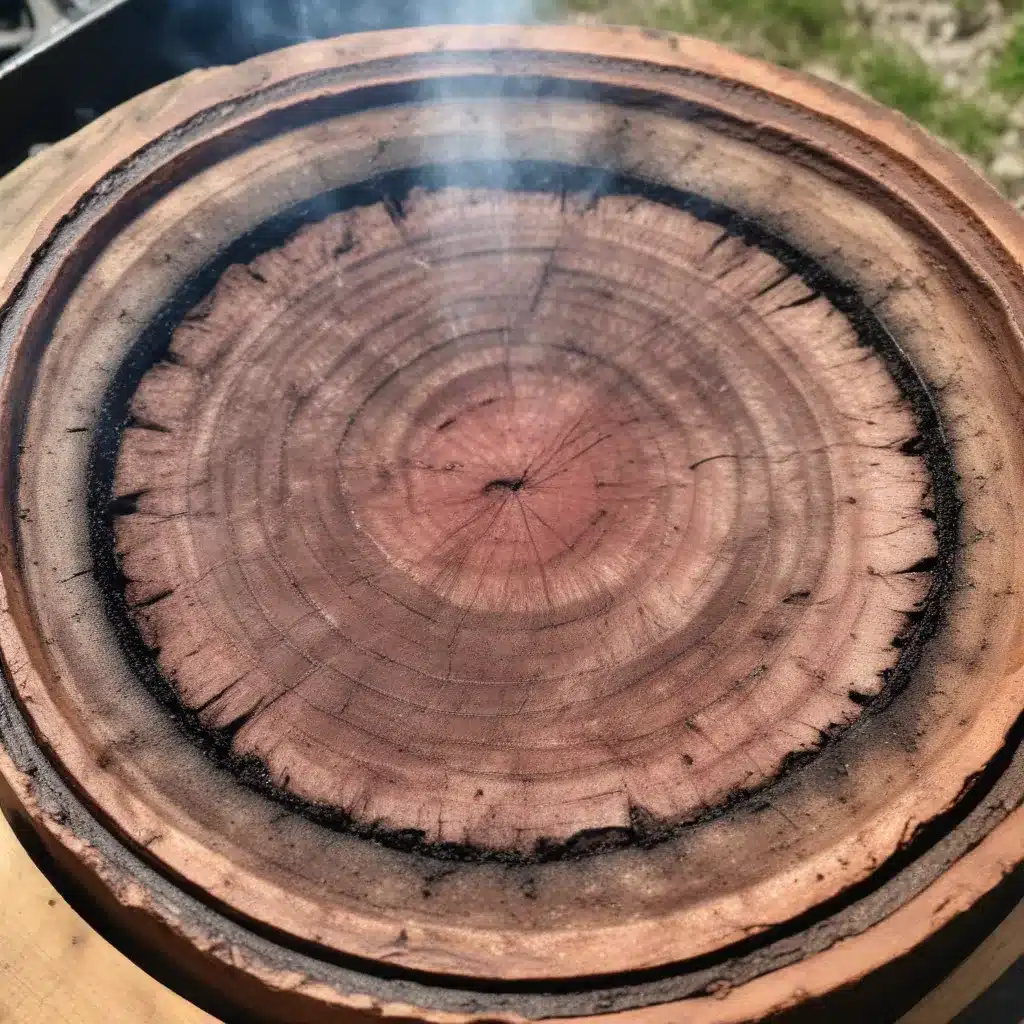
As an experienced barbecue pitmaster, I’m often asked about the elusive and captivating smoke ring – that vibrant pinkish-red hue that appears just beneath the surface of perfectly smoked meats. It’s not just a visual delight, but a testament to the skill and technique of the pitmaster. In this comprehensive guide, I’ll share my personal insights and practical tips on how to consistently achieve the perfect smoke ring, whether you’re a backyard grilling enthusiast or a seasoned competition pitmaster.
The Science Behind the Smoke Ring
The smoke ring is a fascinating chemical reaction that occurs between the meat, the smoke, and the heat. At the heart of this process is the presence of myoglobin, a protein found in muscle tissue. When the meat is exposed to the carbon monoxide (CO) present in the smoke, the myoglobin in the meat’s surface layer reacts with the CO to form carboxymyoglobin. This compound is responsible for the pinkish-red hue of the smoke ring, as it is more stable and resistant to the effects of heat than the original myoglobin.
As the cooking process continues, the heat penetrates deeper into the meat, causing the myoglobin in the interior to denature and turn brown. However, the carboxymyoglobin in the outer layer remains, creating the distinct smoke ring that we all know and love. This visual cue not only adds to the appeal of the dish but also contributes to the overall flavor profile.
Factors Influencing Smoke Ring Formation
While the science behind the smoke ring is fascinating, there are several factors that can influence its formation and depth. Understanding these factors is key to consistently achieving the perfect smoke ring.
Wood Choice
The type of wood used for smoking can have a significant impact on the smoke ring. Different woods, such as oak, hickory, and mesquite, produce varying levels of carbon monoxide, which directly affects the intensity of the smoke ring. Experimenting with different wood types can help you discover the perfect combination for your desired smoke ring.
Moisture Content
The moisture content of the meat can also play a role in smoke ring formation. Drier meats tend to absorb more smoke, leading to a more pronounced smoke ring, while moist meats may have a less defined ring. Proper moisture management, through techniques like patting the meat dry or using a dry rub, can help maximize smoke ring development.
Cooking Temperature
The temperature at which the meat is cooked is another crucial factor. Higher temperatures can cause the myoglobin to denature more quickly, resulting in a thinner or less distinct smoke ring. Maintaining a consistent temperature range, typically between 225°F and 250°F, is essential for allowing the myoglobin-carbon monoxide reaction to take place.
Practical Tips for Achieving the Perfect Smoke Ring
Now that we understand the science and factors behind the smoke ring, let’s explore some practical tips to help you achieve the perfect smoke ring every time.
Meat Preparation
Ensuring that the meat is properly prepared before smoking is essential. This includes trimming any excess fat, patting the meat dry, and applying a dry rub or seasoning to help the smoke adhere to the surface. These steps can enhance the meat’s ability to absorb the smoke and contribute to a more pronounced smoke ring.
Smoking Conditions
Maintaining the right smoking conditions is key to creating a deep, vibrant smoke ring. This includes using the appropriate wood chips or chunks, controlling the temperature and airflow, and allowing the meat to smoke for the right amount of time. Closely monitoring and maintaining the cooking temperature is crucial for smoke ring formation.
Brisket and Pork Ribs
While the principles of smoke ring formation are the same across different types of meat, the appearance and depth of the ring can vary depending on the specific cut and characteristics of the meat. Beef brisket is one of the most popular meats for showcasing a beautiful smoke ring due to its dense, fibrous nature, which allows for a deep, pronounced ring that can extend several inches into the meat. Pork ribs also lend themselves well to the formation of a smoke ring, though the ring may not be as deep as on a brisket due to the thinner cut of the meat.
Debunking Common Misconceptions
Despite the importance of the smoke ring in barbecue, there are a few common misconceptions that are worth addressing. Some people mistakenly believe that the depth of the smoke ring is directly related to the flavor of the meat. While the smoke ring can be an indicator of good smoking technique, it does not necessarily mean the meat will taste better. The true test of a well-smoked meat lies in its tenderness, juiciness, and overall flavor profile.
Another misconception is that the smoke ring can be artificially created through the use of chemicals or other methods. While there are some techniques that can enhance the appearance of the smoke ring, such as injecting the meat with a solution containing sodium nitrite, these methods are generally frowned upon in the barbecue community as they can compromise the natural flavor and texture of the meat.
Conclusion
The smoke ring is a captivating and highly sought-after feature of well-executed barbecue. By understanding the science behind its formation and the factors that influence it, you can unlock the secrets to consistently achieving the perfect smoke ring every time you fire up your smoker. Remember, the smoke ring is not just a visual delight, but a testament to your skills as a pitmaster. So go forth, experiment with different woods, temperatures, and techniques, and let your barbecue shine with the beautiful and alluring smoke ring. Happy smoking, friends!
And of course, if you’re ever in the mood for some exceptional barbecue, be sure to visit us at Creekside BBQ. We take great pride in our commitment to the art of barbecue and would love to share our passion with you.

